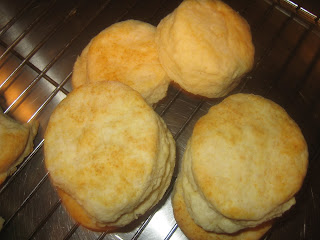 One of the things I enjoy most about selling my ipies at the farmers' market is the chance to talk to people about what kind of pie they love and their childhood memories of pie.
One of the things I enjoy most about selling my ipies at the farmers' market is the chance to talk to people about what kind of pie they love and their childhood memories of pie.Pie talk invariably leads to a discussion of other kinds of favorite desserts. I keep a clipboard close at hand so I can make a quick note of desserts that people tell me I just have to bake.
One day at the market I met Helen, a beautiful woman with a southern accent that was as sweet as honey. She was an elderly woman and had grown up in North Carolina. She always had a rolling cart bursting with fresh bread and colorful produce. And she always bought an ipie from me to eat while she shopped.
She told me I just had to try a gingerbread cake that she was fond of and that was a tradition where she had grown up to eat on New Year's Day. She said it was called Lafayette Gingerbread. Now the tradition during my childhood on New Years Day was to eat cooked cabbage so this was a tradition I could easily make my own!
I've baked quite a few gingerbread cakes but hadn't heard of Lafayette Gingerbread. Helen said it was an old recipe from the 1700s and legend has it that it was served to General Lafayette (French hero of the American Revolution) by George Washington's mother, Mary Ball Washington, at her home in Virginia.
That is typically all you hear of the legend but if you remember your American history, you might remember that before he was General Lafayette, he was Gilbert du Motier, marquis de Lafayette.
Lafayette came to America at the age of 19 and was instrumental in convincing France to send aid to the fledgling American republic. He became an unpaid volunteer of the Continental Army under George Washington and distinguished himself not only on the battlefield, but also as a loyal friend to Washington. Congress gave him the title of Major General.
George Washington came to consider him as a son and Lafayette named his son Georges Washington with George Washington serving as his godfather.
So, no wonder George Washington's mother named the cake in his honor. But not only cakes are named in his honor, numerous streets, parks, colleges and cities were named in his honor including the town of Fayetteville, North Carolina. But of course the most important place to be named after him is West Lafayette, Indiana, home of my alma mater, Purdue University.
And just as important as the towns and parks were the sweets named in his honor. In addition to that famous gingerbread, other desserts named after the General include Lafayette Pie, Fayette Pudding and Lafayette cakes.
I asked Helen if she had a family recipe that she would share with me and she sheepishly admitted that she uses a recipe from Saveur Magazine!
The recipe for Lafayette Gingerbread from Saveur was typical of recipes of that era in that it called for numerous spices, citrus and dried fruit.
According to Mark Zanger, author of The American History Cookbook, "We imagine early American food as being very plain but, in fact, given half a chance, people still had a lot of the medieval British taste for a lot of spices and herbs."
And with two tablespoons of ginger among other spices, this recipe promised to be medieval indeed!
My house smelled like Christmas as the cake baked. The bite I took made my mouth zing -- the ginger was too overpowering to me. But other tasters with more "medieval British tastes" than me, really liked the flavor.
The same day I baked the cake I was also experimenting with my new ice cream machine. The same machine I had recently dragged to a book-signing event at Omnivore Books on Food in S.F. where cookbook author and ice cream master David Lebovitz nicely agreed to autograph the lid with his sharpie!
I had decided to make the salted caramel recipe that I had recently seen in an issue of Gourmet Magazine. I tried a scoop of the finished ice cream on the gingerbread. What a great combination. The caramel mellowed out the ginger in the cake and gave it a rich salty flavor.
And being from France but obviously a big fan of America, I think General Lafayette would have appreciated the sophisticated addition of salted caramel ice cream to a very American gingerbread.







